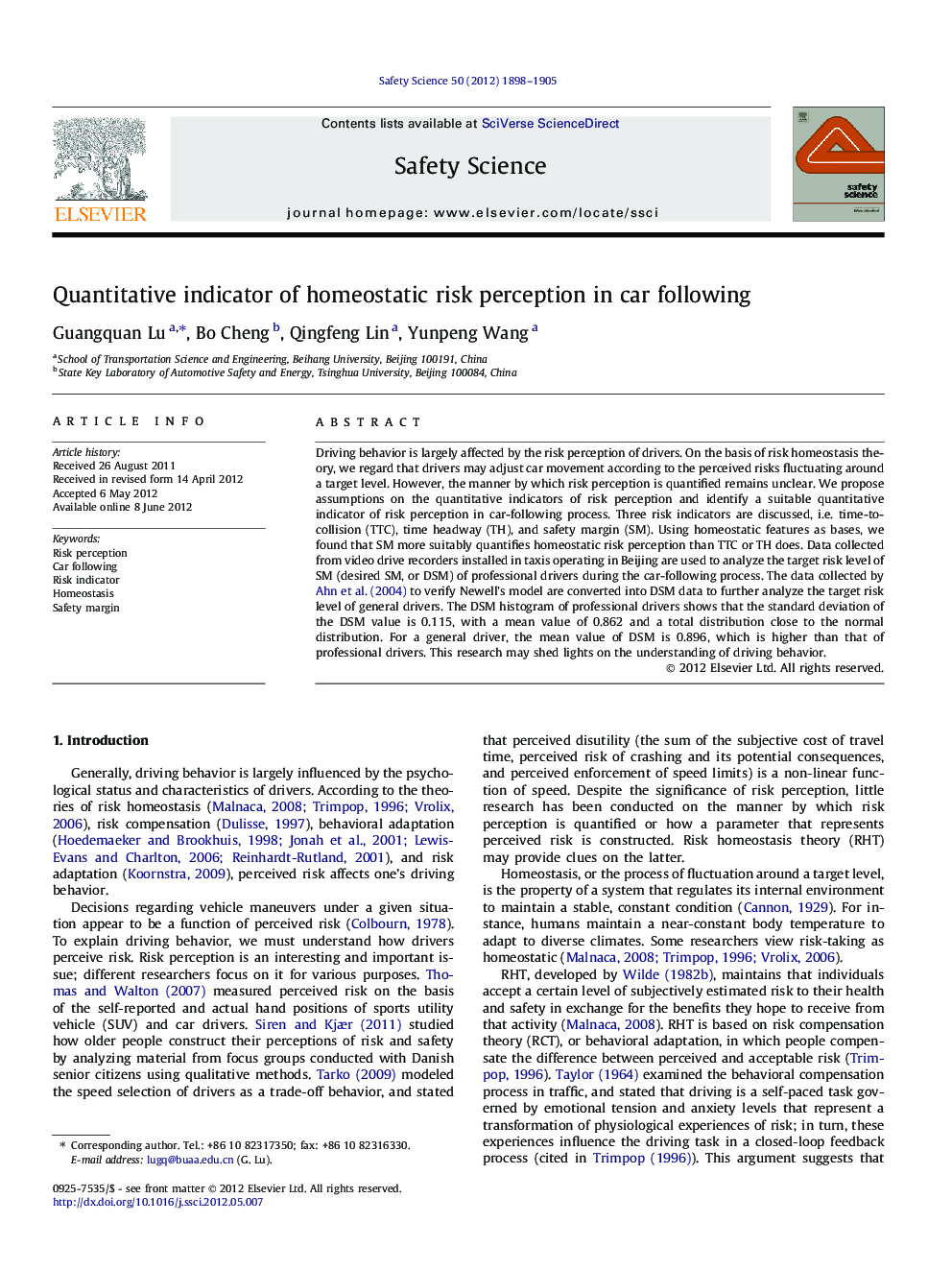| کد مقاله | کد نشریه | سال انتشار | مقاله انگلیسی | نسخه تمام متن |
|---|---|---|---|---|
| 589355 | 878703 | 2012 | 8 صفحه PDF | دانلود رایگان |

Driving behavior is largely affected by the risk perception of drivers. On the basis of risk homeostasis theory, we regard that drivers may adjust car movement according to the perceived risks fluctuating around a target level. However, the manner by which risk perception is quantified remains unclear. We propose assumptions on the quantitative indicators of risk perception and identify a suitable quantitative indicator of risk perception in car-following process. Three risk indicators are discussed, i.e. time-to-collision (TTC), time headway (TH), and safety margin (SM). Using homeostatic features as bases, we found that SM more suitably quantifies homeostatic risk perception than TTC or TH does. Data collected from video drive recorders installed in taxis operating in Beijing are used to analyze the target risk level of SM (desired SM, or DSM) of professional drivers during the car-following process. The data collected by Ahn et al. (2004) to verify Newell’s model are converted into DSM data to further analyze the target risk level of general drivers. The DSM histogram of professional drivers shows that the standard deviation of the DSM value is 0.115, with a mean value of 0.862 and a total distribution close to the normal distribution. For a general driver, the mean value of DSM is 0.896, which is higher than that of professional drivers. This research may shed lights on the understanding of driving behavior.
► We propose assumptions on the quantitative indicators of risk perception.
► We propose a new risk indicator which is a quantified safety margin in car following.
► We determined that safety margin suitably quantifies homeostatic risk perception in car following.
► We analyze the target risk level of the safety margin in car following.
Journal: Safety Science - Volume 50, Issue 9, November 2012, Pages 1898–1905